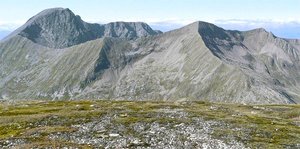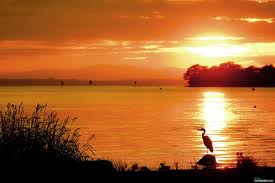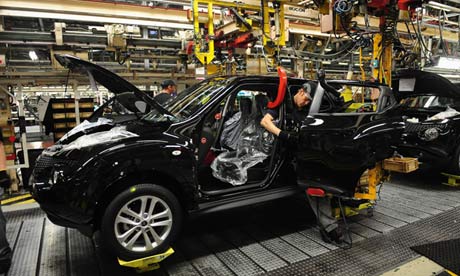
United Kingdom and Britain or officially known as The United Kingdom of Great Britain and Northern Ireland, is a sovereign state situated off the north-western coast of continental Europe. The United Kingdom comprises of Great Britain and Northern Ireland. The Great Britain is made of Scotland in the north, Wales in the southwest and England in the southeast. It is surrounded by the Atlantic Ocean in the north and west, the North Sea lies to the east, the English Channel lies to the south and the Irish Sea lies to the west. London is the capital and the largest city of United Kingdom. It has fourteen British Overseas Territories. The capital, city of London is also home to four World Heritage sites – The Palace of Westminster, the Tower of London, Maritime Greenwich and the Kew Botanical Gardens.
The United Kingdom has a total area of approximately 243,610 sq. km, occupying the major portion of the British Isles, including the island of Great Britain and one-sixth of the island of Ireland that is situated in the northeast and some smaller surrounding islands. United Kingdom lies between the latitudes 49° to 61° N and the longitudes 9° W to 2° E. The Northern Ireland has a land area of 14,160 km which consists of Hilly terrains. The Northern Ireland shares a 360 km land boundary with the republic of Ireland. It consists of Lough Neagh, the largest lake in the British Isles, at 388 sq. km. Slieve Donard situated in the Mourne Mountains is the highest peak in the Northern Ireland at 852 m. Great Britain has a coastline of 17,820 km, which is connected to continental Europe by the Channel Tunnel. It is 50 km long and is the longest underwater tunnel in the world. England having an area of 130,395 km covers half of the total area of the United Kingdom. Most of England comprises of lowland terrain, with mountainous terrain located to the north-west of the Tee-Exe line that includes the Cumbrian Mountains of the Lake District, Exmoor, Dartmoor and the Pennines and Limestone hills of the Peak District. Thames, Severn and Humber are the main rivers of England. Scafell Pike at 970 m in the Lake District is the Highest Mountain in England. Other rivers include Tees, Tyne, Tweed, Avon, Exe and Mersey. The mainland of Scotland has an area of 78,772 sq. km and its only land border is with England between the basin of River Tweed on the east coast and the Solway Firth in the west. Ben Nevis at 1,343 m is the highest point in the British Isles. Wales with an area of 20,779 sq. km accounts for less than a tenth of the total area. Wales is mountainous, with South Wales being less mountainous than the mid Wales and the North. Majority of the population is inhabited in the South Region of Wales. The highest mountains in Wales are in Snowdonia. Snowdon at 1,085 m is the highest peak in Wales. Wales has a coastline over 1,200 km. Off the Welsh Mainland there are several islands; Anglesey that is situated in the northwest is the largest island.
Ben Nevis

Lough Neagh

The latitude and the Atlantic Ocean influence the climate of United Kingdom. Being closer to the Atlantic Ocean, Northern Ireland, Wales and the western parts of England and Scotland are mostly the wettest, windiest and the mildest regions of the United Kingdom. The eastern areas are generally cooler and drier and the northern areas are mostly wetter, cooler and have a slight differentiation in temperatures in comparison with the southern areas. In comparison with the other areas of United Kingdom, England has warm maximum and minimum temperatures throughout the year. England experiences sunny days throughout the year, with few rainy days every month. May is the driest month in the year; with an average rainfall of 58.4 mm. Seasonal temperature variation is experienced in the south-western parts of England. The temperature ranges between 0°C to 10°C from the months of March to May. Between June and August, the country experiences its driest season with most days averaging about 17°C to 20°C. Unstable weather conditions prevail between the months of September and November with an average temperature ranging between 1°C to 13°C. The cold air creates an increased amount of precipitation during these months. Winter in country lasts from the month of December to February with temperature ranging from as low as 0°C to 10°C. Northern Ireland is warmer in comparison with Scotland throughout the year and the maximum temperatures are milder from the months of December to April in Wales and from the months of December to February in England. Few rainy days are experienced throughout the year, but in the month of May it rains frequently. The month of January experiences maximum rainfall with an average of 119.1 mm. Scotland experiences the coolest weather than any other country in the United Kingdom. The average minimum temperature in the month of January is as low as -0.2°C. Scotland experiences rainfall every month apart from May, June and December. Wales experiences warmer temperatures throughout the year, with May being the sunniest month of the year. It remains dry throughout the year apart from May, June and December. Wales experiences more rainfall in a year than Northern Ireland and England, but has few rainy days than Northern Ireland and the rainfall is usually intense.
Many different religions and faiths are practiced within the United Kingdom as the constitution allows religious freedom to all its citizens to practice or preach any religion as per their belief or culture. Various forms of Christianity have prevailed in the United Kingdom for over 1,400 years. An approximate of 71.6% of the total population are Christians, 2.7% are Muslim, 1% are Hindu, 1.6% other religious groups (Judaism, Sikhism, Buddhism) and 23.1% of the population belong to non- religious groups. The Christian denominations in United Kingdom include Anglican, Roman Catholic, Presbyterian and Methodists. There are also small numbers of other Protestant denominations and the Orthodox Church. Other than Christianity, the religious groups that prevail in the country have established their presence in the country by both immigration and by attracting converts. Small groups of Baha’i Faith, Rastafarian movement and Neopaganism also exist in United Kingdom. One of the largest Muslim communities is found in Britain, with over one thousand mosques and prayer centres. Majority of the Muslims reside in England and Wales where they account to 2.7% of the population. The largest groups of Sikhs are more concentrated in Greater London, Birmingham and Manchester. Small communities of Sikhs also exist in Northern Ireland, Wales and Scotland. The Hindus that account to 1% of the total population are mostly concentrated in England, half of the population residing in London alone. Small communities of Hindus also exist in Northern Ireland, Wales and Scotland. Presently there are over one hundred and forty temples situated throughout Britain. Every other religion and religious groups prevailing in United Kingdom have their own places of worship located in each town and city.
English is the most widely spoken language in United Kingdom. An approximate of 95% of the total population use English as their first language. In Wales, Welsh language is the official language and the second most spoken language in the United Kingdom. Besides English and Welsh, Polish is the third most spoken language in all of England and Wales. Recent immigration in the country has brought about languages that are spoken by about 5.5% of the population. Many citizens in the country can speak or understand second or a third language from the secondary education or from private classes. Punjabi, Hindi, Gujarati and Bengali are the South Asian Languages that are the largest growing languages and are spoken about by 2.7% of the total population. About 38% of United Kingdom’s citizens can speak at least one language besides their mother tongue, 18% can speak at least two languages and 3% can understand at least three languages. In United Kingdom there are about four Celtic languages that are spoken: Irish, Scottish, Gaelic and Cornish. Some of these languages are recognized as regional or minority languages. About 62% of the population cannot speak any foreign language. The immigrant languages used in the country include Punjabi, Bengali, Sylheti, Urdu, French, Cantonese, Malayalam, Greek, Italian, Tamil, Caribbean Creole and Gujarati.
On the basis of the existing market-exchange rates the United Kingdom is the sixth-largest economy in the world. It is also the third largest in Europe after France and Germany. For issuing the nation’s currency (Pound Sterling), the Bank of England is responsible, whereas the banks in Scotland and Northern Ireland have the right to issue their own notes. The service sector in United Kingdom accounts up to 73% of the GDP. Finance, Manufacturing and trade are the base of the economy. Banking, finance and insurance are the mainstays of the economy. Tourism remains a significant part of the economy as the United Kingdom is the sixth most-visited country in the world with London, the capital city attracting the maximum number of international visitors. The United Kingdom is one of the most industrialized nations in the world. The industrialization started with the textile industry, gradually being followed by heavy industries including shipbuilding, coal mining and steel making. The major products are machine tools, aircraft and ships, motor vehicles, electronics, chemicals, coal, petroleum and food processing. United Kingdom is also one of the leading trading powers in the world. Chief Exports of United Kingdom includes food, chemicals, fuels and manufactured goods. Agriculture in the country is very intensive with the use of high-mechanized standards that produce 60% of food needs with less than 1.6% of the labour force. Majority of the labour force is dedicated to livestock and the remaining are devoted to arable crops. United Kingdom is also rich in many natural resources like coal, petroleum, tin, limestone, iron ore, salt, clay, natural gas, chalk, gypsum, lead, silica and has an abundance of arable land.
Automobile industry

G Kowledge of | 0 Comments >>
0 Comments
Leave Comment
Your email address will not be published. Required fields are marked.